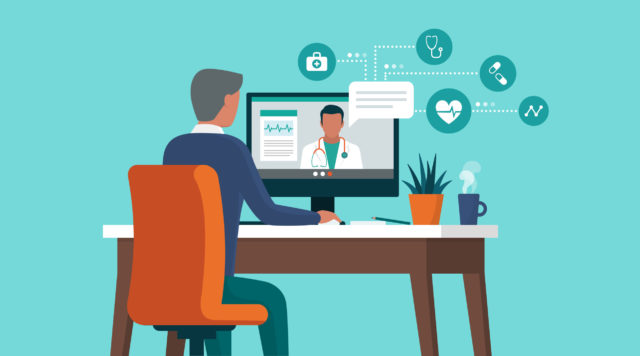
Making predictions in unpredictable times can be dangerous. As long-held certainties – even ones as basic as person-to-person contact – have proven unreliable, perhaps we can only really trust the trends that bring us the flexibility to deal with the unexpected.
Healthcare is the perfect bellwether. The sector has borne – and continues to bear – the brunt of this volatility. It has been severely limited by emergencies such as the pandemic, just as these events have driven surging demand for its services.
The fact is, telehealth helped the industry get through the pandemic and it continued to step up in 2022, pivoting to address new realities. So, if we look at the trends that were accelerated this year, we can see that telehealth is the common thread, and the driving indicator, of what’s to come in 2023.
Hospitals at home
Even before 2020, the hospital model faced significant challenges. In 2023, spiraling costs alongside tanking recruitment and retention rates will leave some systems in crisis.
If we look at staffing alone, research suggests that the US will need an additional 275,000 nurses this decade, while nearly a quarter of existing staff report they are thinking of leaving the industry due to issues such as burnout. It’s a situation putting a lot of stress on the system with, for example, Massachusetts reporting 19,000 unfilled hospital jobs in 2022. It’s simply unsustainable.
We have an alternative: as telehealth technologies become ever-more sophisticated, we can move the treatment of more patients currently occupying expensive and resource intensive hospital beds to their own homes. We have a precedent: with telehealth stepping up to fill the care vacuum caused by the pandemic – its use skyrocketed between January and April 2020 by 78 times.
The next five to 10 years will see more and more healthcare services move from the hospital to the home. While relieving pressures on hospitals, it will also see telehealth emerge as a distinct and increasingly valuable part of the healthcare mix.
Tech giant takeovers
Well-executed telehealth combines real-time data, deep consumer insight and the innovative application of technology. Remind you of anything? Telehealth sits squarely in the tech giants’ sweet spot – and it’s a realization that hasn’t gone unnoticed.
Google was one of the first to get off the mark – initially as a health data repository, but soon expanding into data-powered and enhanced healthcare services. The company is now making direct investments in telehealth providers, while Google’s parent, Alphabet, is making billion dollar bets on data driven healthcare that focuses on the needs of individuals rather than generalized services.
Much was made of Amazon’s apparent withdrawal from telehealth as it announced the closure of Amazon Care this year. Subsequent announcements, however, suggest that this was a reappraisal, not a retreat. The company has now acquired One Medical – a telehealth-powered primary care provider – for close to $4 billion. Further, its newly launched Amazon Clinic will act, among other things, as a market place for third-party telehealth providers.
The potential of big tech in telehealth is mouth-watering. Meta’s pioneering exploration of the metaverse, and Microsoft Mesh’s development of ‘mixed reality’ technologies, suggest exciting possibilities around remote virtual healthcare environments and treatments.
With seemingly limitless opportunities to apply new technologies in the telehealth setting, expect to see more tech giant acquisitions through 2023 and beyond.
Behavioral and holistic health
Opportunities to shift more, and more complex, aspects of care into the patient’s home, alongside the attention of the tech giants, point to the most intriguing trend of all. The use of behavioral insights to build a holistic care environment – one that truly integrates physical, social, and mental health to create wellbeing.
If there’s one thing that big tech nails, it’s behavioral insight. Take a stroll across the internet and we are greeted with content that magically aligns with our needs and interests.
Now, imagine a health system that applies this level of insight to patients and their care. A health system that goes beyond monitoring a patient’s vitals, providing remote diagnostics and assisting with medication management. A health system that embeds real community by recognizing and connecting like-minded patients. A system that turns ‘remote’ and potentially isolating healthcare into a very real and health-enhancing sense of belonging.
This isn’t some soft or intangible benefit. We know that there are clear links between anxiety, loneliness and depression. We know that depression can lead to higher morbidity rates in chronic disease such as cancer. We know that major depressive disorders cost the US an estimated $326 billion in pre-pandemic 2018, affecting around 17.5 million adults. And we know that these two figures surged during the pandemic as 11% of US adults reported symptoms of anxiety and depression in 2019, compared to over 40% in 2021.
Fully integrated telehealth offers us the opportunity to not only better treat depression, but intervene long before its incidence – with far reaching implications in terms of care costs, and human health and wellbeing.
One thing we can be sure of: unpredictability will outlive 2022. It means that 2023 will continue to see ever-more innovative technologies applied to telehealth. The opportunity is to ensure that these technologies are themselves applied in innovative ways – ways that put the patient and their wellbeing at the center of care.
Photo: elenabs, Getty Images








